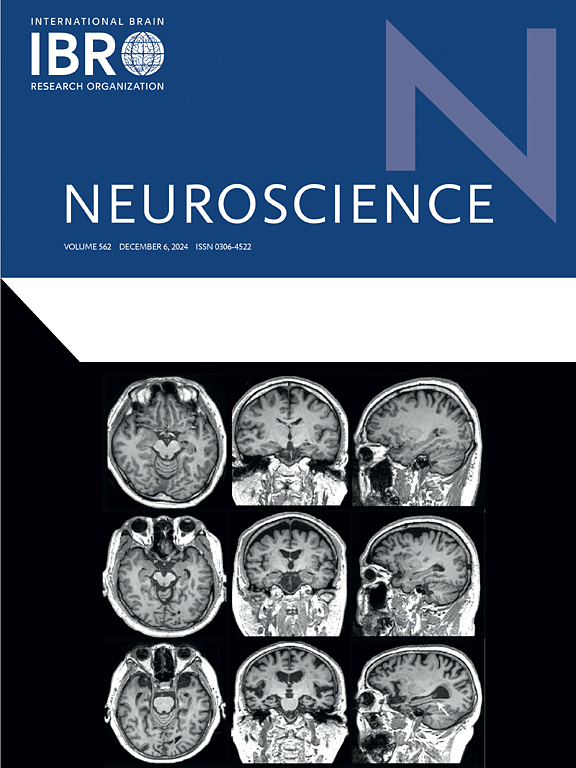ML184 influences coping strategies via GPR55-dependent mechanisms following its delivery in the periaqueductal gray (PAG) region
IF 2.8
3区 医学
Q2 NEUROSCIENCES
引用次数: 0
Abstract
GPR55 is a cannabinoid and lysophospholipid-related receptor involved in multiple functions in the mammalian central nervous system (CNS). In the periaqueductal gray (PAG), GPR55 participates in pain integration, anxiety-related behaviors, and alcohol intake. In this study, ML184 (a synthetic GPR55 agonist) was injected into the PAG region in the absence and presence of CID16020046 (a selective GPR55 antagonist) to analyze the role of GPR55 in anxiety, exploration, and coping responses. Admittedly, the exact areas affected by the drug delivery were not confirmed. Hence, the drugs might have spread to adjacent PAG regions. In the open field (OF) test, ML184 and CID16020046 showed no significant effects (p > 0.05 vs. vehicle) in all parameters tested, but the combination ML184 + CID16020046 increased rearing (p < 0.05). In the elevated plus maze (EPM) test, ML184 and CID16020046 lack an effect (p > 0.05 vs. vehicle) in all parameters tested. In contrast, the combination ML184 + CID16020046 increased time and distance in open arms (p < 0.05). In the defensive burying behavior (DBB) test, CID16020046 produced no effects in all parameters tested (p > 0.05 vs. vehicle). However, ML184 increased freezing and decreased pile height, time in motion, and bury ratio (p < 0.05). All those actions were prevented with CID16020046-pretreatment. Our results suggest that GPR55 in PAG and/or its surrounding regions promote passive coping responses. Moreover, ML184 may induce anxiolytic effects and higher-rearing behaviors by GPR55-independent mechanisms (which remain to be identified).
ML184在输水管周围灰质(PAG)区域释放后,通过依赖gpr55的机制影响应对策略。
GPR55是一种大麻素和溶血磷脂相关受体,在哺乳动物中枢神经系统(CNS)中参与多种功能。在导水管周围灰质(PAG)中,GPR55似乎参与疼痛整合、焦虑相关行为和酒精摄入。本研究在GPR55选择性拮抗剂CID16020046不存在和不存在的情况下,将合成的GPR55激动剂ML184注射到PAG中,分析GPR55在焦虑、探索和应对反应中的作用。无可否认,受药物输送影响的确切区域尚未得到确认。因此,药物可能已经扩散到邻近的PAG区域。在大田(OF)试验中,ML184与CID16020046对所有试验参数均无显著影响(p > 0.05 vs.车),而ML184 + CID16020046组合对所有试验参数均有显著提高(p 0.05 vs.车)。相比之下,ML184 + CID16020046的组合增加了张开双臂的时间和距离(p 0.05)。ML184增加了冻结,降低了桩高、运动时间和埋深比(p
本文章由计算机程序翻译,如有差异,请以英文原文为准。
求助全文
约1分钟内获得全文
求助全文
来源期刊

Neuroscience
医学-神经科学
CiteScore
6.20
自引率
0.00%
发文量
394
审稿时长
52 days
期刊介绍:
Neuroscience publishes papers describing the results of original research on any aspect of the scientific study of the nervous system. Any paper, however short, will be considered for publication provided that it reports significant, new and carefully confirmed findings with full experimental details.
 求助内容:
求助内容: 应助结果提醒方式:
应助结果提醒方式:


